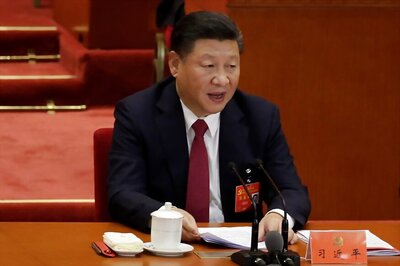
views
Hanoi, Vietnam: Vietnam on Friday started the first phase of a joint plan with former enemy, the United States, to clean up environmental damage leftover from the chemical defoliant Agent Orange, a lasting legacy from the Vietnam War.
The work concentrates on a former US military base in central Vietnam where the herbicide was stored during the war that ended more than three decades ago. It marks the first time the two sides will work together on the ground to clean up contamination.
A statement Friday by the US Embassy in Hanoi said Vietnam's Ministry of Defense will begin sweeping areas around the Danang airport for unexploded ordnance. It will then work with the US. Agency for International Development to remove dioxin from soil and sediment at the site, which is expected to begin early next year.
US aircraft sprayed millions of gallons (liters) of the chemical over South Vietnam during the war to destroy guerrilla fighters' jungle cover.
Contamination from dioxin - a chemical used in Agent Orange that has been linked to cancers and birth defects - has remained a thorny topic between the former foes as relations have thrived in other areas. Washington was slow to respond to the issue, arguing for years that more research was needed to show that the wartime spraying caused health problems and disabilities among Vietnamese.
"As Secretary of State Hillary Clinton remarked while visiting Vietnam last October, the dioxin in the ground here is 'a legacy of the painful past we share,' but the project we will undertake here, as our two nations work hand-in-hand to clean up this site, is 'a sign of the hopeful future we are building together,'" said Virginia Palmer, the US Embassy's charge d'affaires, in a speech during the kickoff ceremony.
The $32 million project will remove dioxin from 71 acres (29 hectares) of land at the Danang site where a 2009 study by the Canadian environmental firm Hatfield Consultants found chemical levels that were 300 to 400 times higher than international limits.
Two other former US air bases in the southern locations of Bien Hoa and Phu Cat also have been identified as hotspots where the defoliant was mixed, stored and loaded onto planes during the war, allowing spilled dioxin to seep into the soil and water systems.
The war ended on April 30, 1975, when northern communist forces seized control of Saigon, the US-backed former capital of South Vietnam. The country was then reunified under a one-party communist government.
Vietnam's Red Cross estimates up to 3 million Vietnamese have suffered health-related problems from Agent Orange exposure. The US has said the actual number is far lower and that other health and environmental factors are likely to blame for many illnesses and disabilities.


















Comments
0 comment